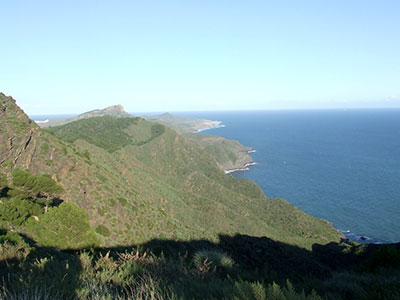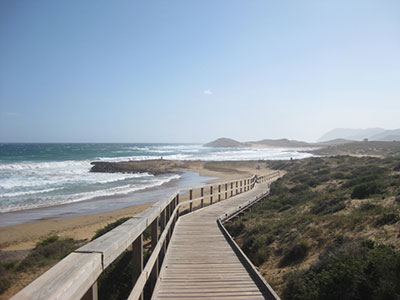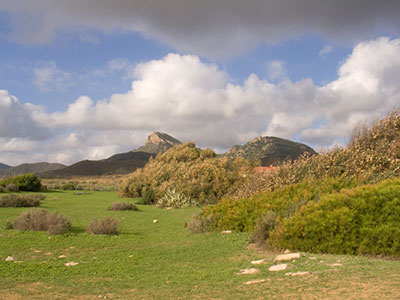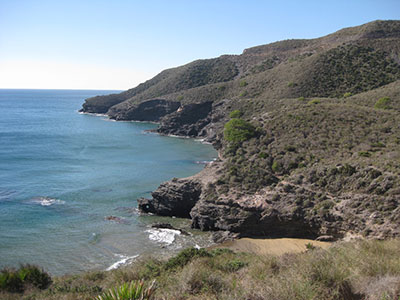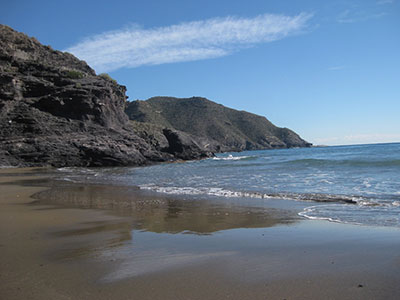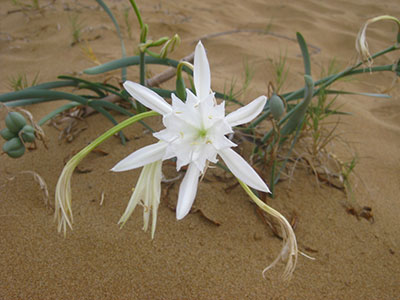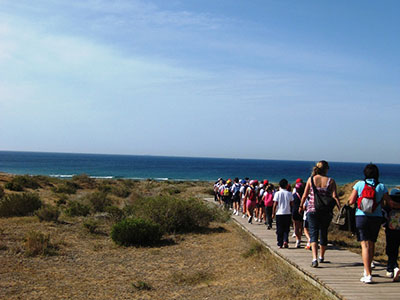Calblanque, Monte de las Cenizas y Peña del Águila
Cartagena, La Unión
The Calblanque Regional Park is located at the eastern end of our coastline, between Cabo de Palos and Portmán. This enclave is characterised by the great diversity of environments that converge here, with Aleppo pine woods, scrubland, wadis, sandbanks, dunes, paleodunes, coves and cliffs, as well as an endorheic basin in which the Salinas del Rasall (a wetland included in the Mar Menor ZEPA) can be found.
In summer, many people come to Calblanque to enjoy its beaches, so it is essential to regulate the access of motor vehicles to the Park in order to guarantee the conservation of this unique environment. Information on the "Calblanque 4:40" beach access management system can be consulted on the website Murcia Natural
Visitors Centre Las Cobaticas: +34 649 227 582
Email: infocalblanque@carm.es
SCHEDULE:
16th SEPTEMBER to 14th JUNE
Tuesday to Saturday: 09:00 . to 14:00. and 15:00 to 17:30h.
Sundays and public holidays: 09:00 to 15:00h
JUNE 15th to SEPTEMBER 15th (Pending to know the definitive timetable during the period of access to Calblanque)
Tuesday to Thursday : 09:00 to 15:00h.
Friday and Saturday: 09:00 to 15:00h and 16:00 to 19:30h
Sundays and holidays: 09:00 to 15:00h
CENTRE CLOSED:
- Every Monday, except 1 November and 6 December national holidays.
- Public holidays: 1, 5 and 6 January, 1 April, 1 May, 24, 25 and 31 December.
- For staff training: 24 February, 26 and 27 May and 15 and 16 December.
Download Brochure Regional Park Calblanque
Download Inherit Región de Murcia
THE PARK RECOMMENDS
The park can be visited all year round with very mild temperatures, although in summer they are high, so it is advisable to visit the Regional Park in the early hours of the morning, bringing plenty of water and sun protection. Mosquitoes are also frequently present, so it is advisable to carry repellent lotion.
FLORA
The great floral diversity of the Calblanque Regional Park, its different environments and its climatic characteristics make this area a real botanical jewel.
This natural area has species that are exclusive to the southeast of the peninsula and important Ibero-African species such as the Cartagena cypress or the Cartagena rockrose, the latter of which is listed as endangered at national and regional level. Coastal scrubland adapted to aridity alternates with dense Aleppo pine forests. The mobile maritime dunes are very fragile and unstable environments, with species such as sea asparagus, sea lily, sea hornwort and sea holly. On rocky cliffs we find plants that grow in cracks and crevices, coping with the scarcity of soil and water and the constant scourge of the sea. The sea fennel and the sea daisy are some of the species that live in these environments.
FAUNA
The fauna is very diverse in this protected area. The Rasall salt flats provide shelter and food for numerous aquatic birds such as egrets, stilts, avocets, kentish plovers and Audouin's gulls, among others. The fartet, a fish endemic to the southeast Iberian Peninsula that is in danger of extinction, is particularly important in the salt marshes.
Other important species that inhabit this area are the peregrine falcon, the eagle owl and the Bonelli's eagle. There are also mammals such as the badger and the marten and reptiles such as the Iberian skink, the bastard snake and the Betic lizard.
USES
The rich combination of natural and cultural elements make this Regional Park a privileged landscape, enriched by the presence of human beings since ancient times. Various archaeological remains have been found in the Regional Park, from Neolithic to Roman times, crops, traditional buildings and salt mines. Witnesses of past mining activity are the shafts, derricks and smelting furnaces that dot the landscape. The military batteries of Las Cenizas and La Chapa evoke the strategic interest of the area for defence.
FACILITIES
The Las Cobaticas Visitor Centre is located in the Regional Park, where visitors can request informative material and learn about the values of the environment through the exhibition room and the video documentary of the Regional Park. Visitors also have interpretative signs at their disposal on the signposted trails, the bird observatories and the viewpoints.


